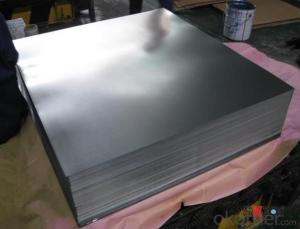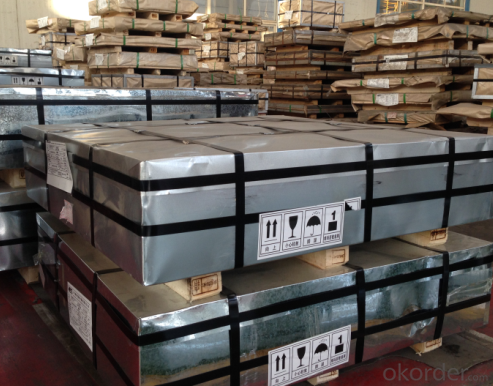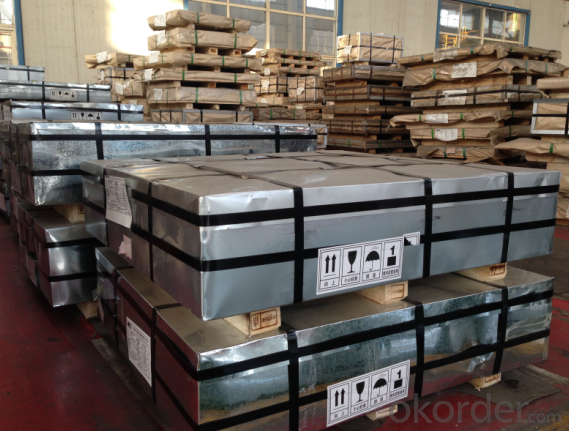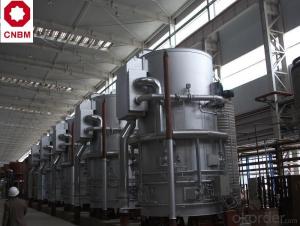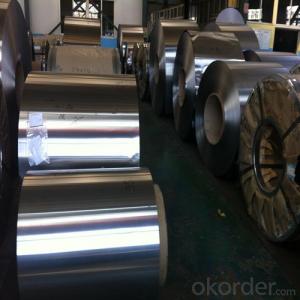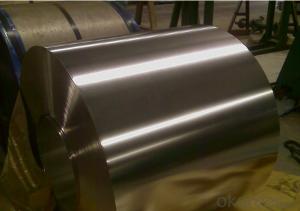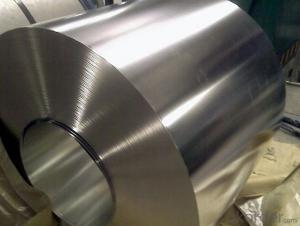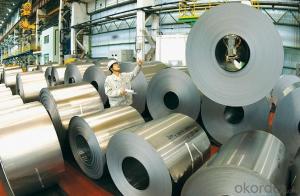Tinplate (ETP) Coil and Sheets for Foods and Chemical Packaging
- Loading Port:
- Tianjin
- Payment Terms:
- TT OR LC
- Min Order Qty:
- 25 m.t.
- Supply Capability:
- 7000 m.t./month
OKorder Service Pledge
OKorder Financial Service
You Might Also Like
1.Structure of Tinplate (ETP) Coil and Sheets for Foods Packaging Description
Electrolytic Tin Plate Coils and Sheets for Foods Metal Packaging, is one thin steel sheet with a coating of tin applied by electrolytic deposition. Tinplate made by this process is essentially a sandwich in which the central core is strip steel. This core is cleaned in a pickling solution and then fed through tanks containing electrolyte, where tin is deposited on both sides. As the strip passes between high-frequency electric induction coils, it is heated so that the tin coating melts and flows to form a lustrous coat.
2.Main Features of the Tinplate (ETP) Coil and Sheets for Foods Packaging
Appearance – Electrolytic Tin Plate is characterized by its beautiful metallic luster. Products with various kinds of surface roughness are produced by selecting the surface finish of the substrate steel sheet.
Paintability and printability – Electrolytic Tin Plates have excellent paintability and printability. Printing is beautifully finished using various lacquers and inks.
Formability and strength – Electrolytic Tin Plates have got very good formability and strength. By selecting a proper temper grade, appropriate formability is obtained for different applications as well as the required strength after forming.
Corrosion resistance – Tinplate has got good corrosion resistance. By selecting a proper coating weight, appropriate corrosion resistance is obtained against container contents. Coated items should meet 24 hour 5 % salt spray requirement.
Solderability and weldability – Electrolytic Tin Plates can be joined both by soldering or welding. These properties of tinplate are used for making various types of cans.
Hygienic – Tin coating provides good and non toxic barrier properties to protect food products from impurities, bacteria, moisture, light and odours.
Safe – Tinplate being low weight and high strength makes food cans easy to ship and transport.
Eco friendly – Tinplate offers 100 % recyclability.
Tin is not good for low temperature applications since it changes structure and loses adhesion when exposed to temperatures below – 40 deg C.
3.Tinplate (ETP) Coil and Sheets for Foods Packaging Images

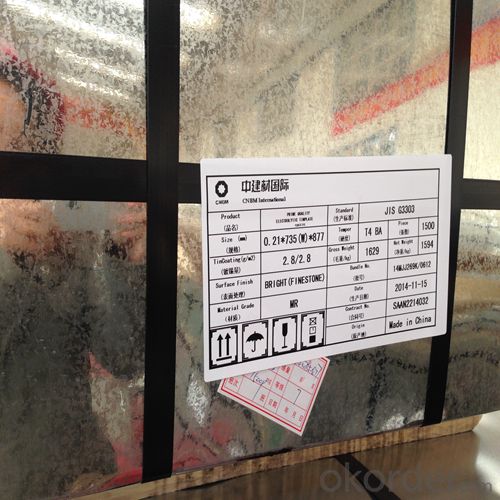
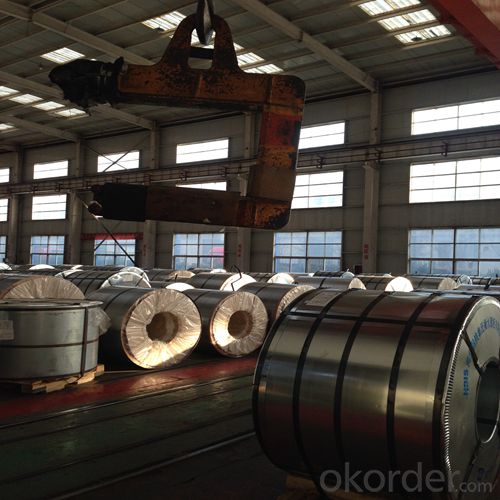

4.Tinplate (ETP) Coil and Sheets for Foods Packaging Specification
Standard | ISO 11949 -1995, GB/T2520-2000,JIS G3303,ASTM A623, BS EN 10202
|
Material | MR,SPCC |
Thickness | 0.15mm - 0.50mm |
Width | 600mm -1150mm |
Temper | T1-T5 |
Annealing | BA & CA |
Coil Inner Diameter | 508mm |
Weight | 6-10 tons/coil 1~1.7 tons/sheets bundle |
Passivation | 311 |
Oil | DOS |
Surface | Finish,bright,stone,matte,silver |
5.FAQ of Tinplate (ETP) Coil and Sheets for Foods Packaging
- How are the Electrolytic Tin Plates specified?
The Electrolytic Tin Plates are specified as per the steel base, extent of tempering, the coating weight, annealing method and the surface finish.
- How many types there are for base steels?
The base steels are of three types: Type MR, L, D
- How many types there are for base steels?
The base steels are of three types: Type MR, L, D
-What your tinplate material is used for ?
Tinplate is widely used for the packaging of products. Such as food cans,
beverage cans, pet cans, closures, general line cans and so on.
- Q: How does tinplate perform in terms of lightness and portability?
- Tinplate is relatively lightweight and portable due to its thin and flexible nature. It can be easily carried and transported, making it a convenient choice for various applications.
- Q: Is tinplate safe for food contact?
- Yes, tinplate is safe for food contact. It is widely used in the packaging industry for food and beverage cans as it provides a protective barrier that prevents contamination and preserves the quality and safety of the food inside.
- Q: Can tinplate be used for electrical components?
- Yes, tinplate can be used for electrical components. Tinplate is a type of steel coated with a thin layer of tin, which provides good electrical conductivity and corrosion resistance. It is commonly used for manufacturing electrical components such as connectors, terminals, and shielding materials.
- Q: What are the common sizes of tinplate sheets?
- The common sizes of tinplate sheets vary, but they generally come in standard dimensions such as 24 x 36 inches, 36 x 48 inches, and 48 x 96 inches.
- Q: What are the safety regulations for using tinplate in toys?
- The safety regulations for using tinplate in toys typically involve compliance with relevant international safety standards. These regulations ensure that the tinplate used in toys is free from hazardous materials, such as lead or other toxic substances, and that it meets specific safety requirements, such as resistance to sharp edges or choking hazards. Compliance with these regulations aims to protect children from potential harm or injury while playing with tinplate toys.
- Q: What are the main factors influencing the competitiveness of tinplate manufacturers?
- The main factors influencing the competitiveness of tinplate manufacturers include price competitiveness, quality of products, technological advancements, production efficiency, supply chain management, customer satisfaction, and adherence to environmental and safety regulations. Additionally, factors such as market demand, brand reputation, innovation, and the ability to adapt to changing market trends also play a crucial role in determining the competitiveness of tinplate manufacturers.
- Q: Can tinplate be used for packaging alcoholic beverages?
- Yes, tinplate can be used for packaging alcoholic beverages. Tinplate is a commonly used material for cans and can provide a protective barrier against external factors such as light and oxygen, ensuring the quality and freshness of the alcoholic beverages.
- Q: What are the different closure mechanisms for tinplate cans?
- The different closure mechanisms for tinplate cans include: slip cover lids, press-on lids, pull-tab lids, twist-off lids, and peel-off lids.
- Q: Can tinplate be formed into complex shapes?
- Yes, tinplate can be formed into complex shapes through various manufacturing processes such as stamping, deep drawing, and bending.
- Q: What are the different methods of printing on tinplate?
- There are various methods used for printing on tinplate, including lithography, screen printing, and digital printing. Lithography involves transferring an image onto a metal plate, which is then inked and pressed onto the tinplate. Screen printing utilizes a mesh stencil to transfer ink onto the tinplate. Digital printing, on the other hand, involves directly printing the desired image onto the tinplate using specialized printers. These methods offer versatility and allow for the creation of high-quality designs on tinplate for various applications.
Send your message to us
Tinplate (ETP) Coil and Sheets for Foods and Chemical Packaging
- Loading Port:
- Tianjin
- Payment Terms:
- TT OR LC
- Min Order Qty:
- 25 m.t.
- Supply Capability:
- 7000 m.t./month
OKorder Service Pledge
OKorder Financial Service
Similar products
Hot products
Hot Searches
Related keywords
